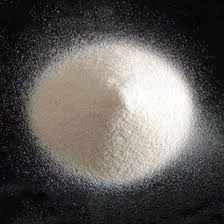
Desemba . 31, 2024 09:41 Back to list
is hpmc soluble in water
Is HPMC Soluble in Water?
Hydroxypropyl Methylcellulose (HPMC) is a versatile polymer that has gained significant attention in various industries, particularly in pharmaceuticals, food, and construction. As a derivative of cellulose, HPMC is produced through the etherification of cellulose, where hydroxyl groups in the cellulose molecule are partially replaced by hydroxypropyl and methyl groups. This modification imparts unique properties to the polymer, including its solubility in water, which is a crucial factor for its application in many fields.
Solubility Characteristics
One of the defining features of HPMC is its solubility in water. Unlike many other cellulose derivatives that require specific conditions to dissolve, HPMC is readily soluble in cold water. When added to water, HPMC forms a viscous gel-like solution. This property is essential in several applications, especially in pharmaceuticals, where it is used as a thickening agent, binder, and film-forming agent in various formulations.
The solubility of HPMC is influenced by several factors, including the degree of substitution and molecular weight. The degree of substitution refers to the extent to which hydroxyl groups in the cellulose molecule are substituted with hydroxypropyl and methyl groups. Generally, HPMC with a higher degree of substitution tends to dissolve more readily in water. Additionally, the molecular weight of HPMC can also affect its solubility; lower molecular weight HPMC tends to dissolve faster compared to higher molecular weight variants.
Applications of Water-Soluble HPMC
is hpmc soluble in water

1. Pharmaceuticals In the pharmaceutical industry, HPMC is widely used in the formulation of tablets and capsules. It acts as a binder that holds the ingredients together and a stabilizer that helps maintain the integrity of the formulation during storage. In controlled-release formulations, HPMC serves as a matrix, allowing for the gradual release of active ingredients in the gastrointestinal tract.
2. Food Industry HPMC is also utilized in the food sector as a thickener, emulsifier, and stabilizer. Its ability to form stable gels makes it an ideal ingredient in various food products, including sauces, dressings, and baked goods. Moreover, HPMC is particularly valued in gluten-free formulations, where it helps improve texture and moisture retention.
3. Construction In construction, HPMC is employed as an additive in cement-based products like tile adhesives, plasters, and joint compounds. Its water-retention properties enhance adhesion and workability, making it essential for ensuring the durability and quality of construction materials.
4. Cosmetics In the cosmetics industry, HPMC is used in formulations such as lotions, creams, and gels. Its thickening and emulsifying properties help to improve the texture and stability of cosmetic products, enhancing their performance and user experience.
Conclusion
In summary, Hydroxypropyl Methylcellulose (HPMC) is indeed soluble in water, making it a valuable ingredient across various industries. Its solubility not only facilitates its use in pharmaceutical, food, construction, and cosmetic applications but also enhances the functionality of products in which it is incorporated. The specific properties of HPMC, dictated by its degree of substitution and molecular weight, allow for tailored formulations to meet diverse needs. As industries continue to seek versatile and effective additives, HPMC’s role is expected to expand further, underscoring its significance in modern formulations. Its ability to dissolve in cold water provides ease of use and incorporation into various systems, making HPMC an essential polymer in both established and emerging applications.
-
Unlocking the Benefits of HPMC Products: A Gateway to Versatile Applications
NewsAug.07,2025
-
Unleashing the Potential of HPMC Ashland: A Comprehensive Look
NewsAug.07,2025
-
Tile Bonding Cellulose: The Key to Superior Adhesion and Durability
NewsAug.07,2025
-
Hydroxypropyl Methylcellulose Powder: The Versatile Component in Modern Pharmaceuticals
NewsAug.07,2025
-
Hydroxyethyl Cellulose: The Versatile Solution for Various Industries
NewsAug.07,2025
-
Hydroxyethyl Cellulose (HEC): The Versatile Polymer for Various Applications
NewsAug.07,2025







